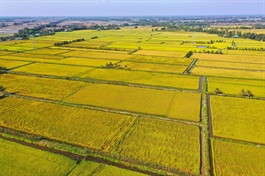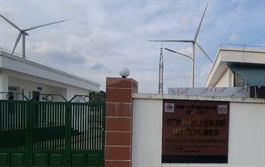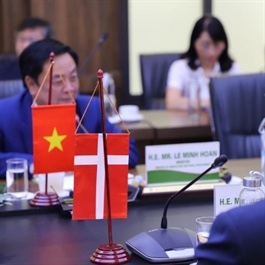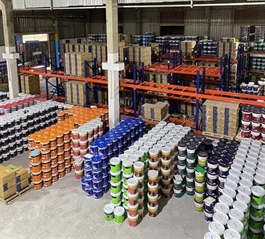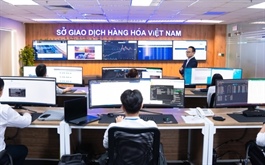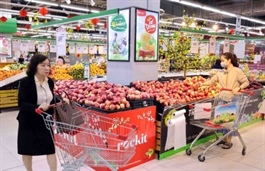Retail real estate market: a magnet for major international players
Retail real estate market: a magnet for major international players
Việt Nam’s retail real estate market is thriving in terms of scale and quality, with occupancy rates above 90 per cent in major city shopping centres, according to a report from the Vietnam Association of Realtors (VARS).
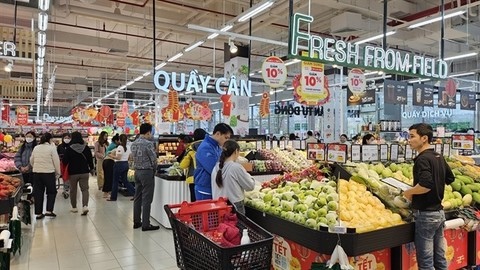
People shopping at Tops Market, a major retail brand under Central Retail, in Hà Đông District. — VNS Photo Ly Ly Cao |
The retail sector in Việt Nam is a dynamic and resilient industry that has consistently experienced impressive growth rates for decades. Despite being strongly impacted by the pandemic, it has shown remarkable recovery speed.
Since the beginning of 2022, the industry has swiftly rebounded after a prolonged disruption caused by COVID. Businesses have capitalised on opportunities and strategically chosen prime locations for long-term strategies.
This has attracted the attention of global retail giants, even as rental prices have started to rise slightly.
In 2022, it was estimated that total retail sales and consumer service revenue reached nearly VNĐ5.7 trillion (US$223.1 million), up 19.8 per cent year-on-year and 15 per cent from 2019, prior to the COVID-19 outbreak.
Despite not achieving the double-digit growth seen pre-pandemic, the sector was showing a positive recovery.
Last year, total retail sales and consumer service revenue were estimated to reach over VNĐ6.2 trillion, a 9.6 per cent increase from the previous year.
In the first quarter of this year, retail sales were projected to increase 8.2 per cent over last year to more than VNĐ1.5 trillion.
The retail real estate market is expanding in scale and quality, with occupancy rates exceeding 90 per cent in major city shopping centres.
Rental prices in Hà Nội have ticked up by approximately 10 per cent in 2023, while central areas in HCM City maintain high prices around $140/square metre/month and non-central areas have seen a slight rise to about $40/square metre/month.
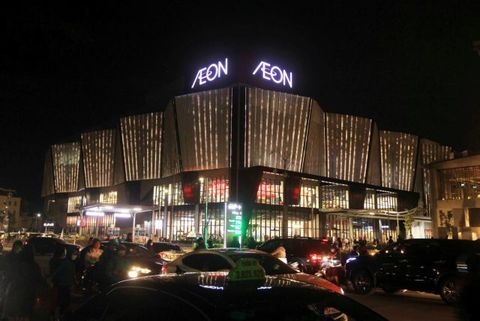
Outside an Aeon shopping centre in Hải Phòng City. — VNA/VNS Photo |
Major players
Việt Nam’s retail real estate market has seen several major conglomerates enter the scene.
Central Retail (Thailand) plans to expand to all 55 provinces and cities nationwide, while Aeon Group (Japan) aims to launch 16 projects, including several in Hà Nội, by 2025.
The Japanese retailer will also introduce new retail concepts to meet customer needs and drive future growth.
Meanwhile, FujiMart Vietnam, a joint venture between BRG Group (Việt Nam) and Sumitomo Corporation (Japan), targets 50 supermarkets by 2028.
Luxury and affordable fashion brands like Uniqlo, Muji, Dior and Cartier have also made a significant impact in recent years.
VARS forecasts a thriving retail real estate market with considerable potential for growth.
According to VARS, there are two key factors contributing to this positive outlook.
The rapid urban population growth and rising incomes have created a significant demand for real estate, especially in the retail sector. People are seeking more convenient living and shopping spaces.
In addition, Việt Nam is experiencing the development of major cities like Hà Nội, HCM City and Đà Nẵng, along with their surrounding satellite areas. Investments in improving transportation infrastructure, including the construction of highways and urban railways, are facilitating easier commuting and better connectivity between urban regions.
The tourism industry's growth in Việt Nam is also creating opportunities for the retail real estate market.
Popular tourist destinations like Phú Quốc, Nha Trang and Đà Nẵng are attracting investors and retailers due to their long-term development potential.
Vietnamese consumers have high expectations for shopping experiences and demand convenience and diversity.
This opens up possibilities for retail brands to develop new business models, including integrated shopping centres with multiple services, dedicated areas for entertainment and dining and experiential product stores.




